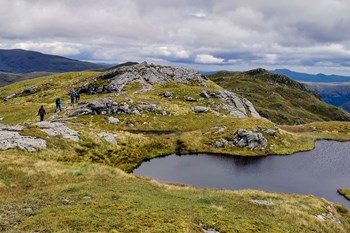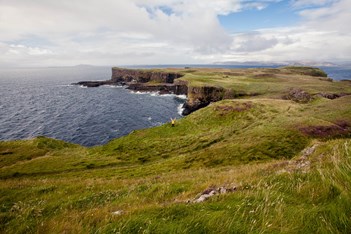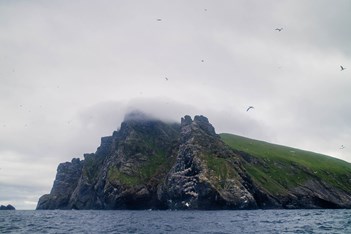By Kathi Kamaleitner.
For those who seek stunning landscapes, remote adventures and thriving wildlife, Scotland is a dream destination. But the increase in visitor numbers puts pressure on the environment and local communities. The more people choose to travel to Scotland, the more important it is that they do so responsibly. This article addresses 5 ways to travel Scotland responsibly in order to minimise your impact.
For those who seek stunning landscapes, remote adventures and thriving wildlife, Scotland is a dream destination. But the increase in visitor numbers puts an immense pressure on the environment and local communities. The more people choose to travel to Scotland, the more important it is that they do so responsibly. This article addresses 5 ways to travel Scotland responsibly in order to minimise your impact.
As a travel writer, I am well aware of the power, but also the risk that social media presents for fragile landscapes like the Scottish Highlands. Beautiful pictures, travel blogs and video can shine the light on lesser-known regions and help communities gain the attention they deserve. But too much of that attention and things can quickly become unbearable.
Scotland has seen an increase in visitor numbers for years and more and more people are longing to connect with nature while they are away on holiday. But while many are genuinely interested in the landscapes that surround them, others see them merely as a backdrop to their Instagram dreams.
While there is a minority of people who mistreat the Scottish landscape knowingly, the majority of people make these mistakes because they don’t know better. Not everybody grows up with access to the mountains, sea or forests and not everybody is aware of the ways in which tourism affects the land and its people.
In this article, I hope to share a few tips to help you become a more responsible visitor.
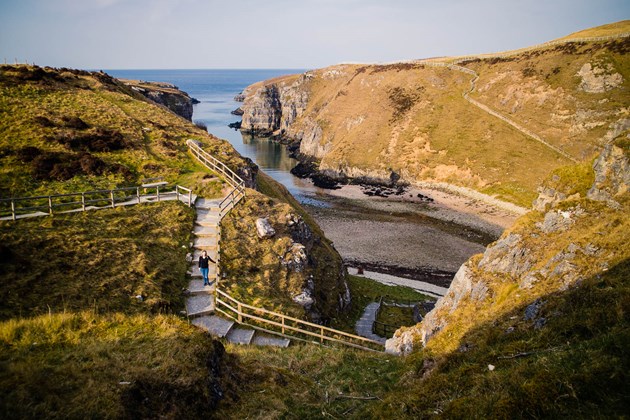
Smoo Cave, Image by Watch Me See
Slow down
Whenever I work with a client to plan their Scotland itinerary, this is the first piece of advice I give them. Scotland looks rather small on the map and driving a hundred or two hundred miles does not sound like much - until you come face to face with Scotland’s narrow mountain roads. And even when the roads are wide and spacious, there are so many views to marvel at, sights to visit, activities to try, villages to stop in, you end up wishing you had allowed more time.
Slowing down has many benefits. First of all, you are likely to reduce your mileage which means lower petrol costs and carbon emissions.
Secondly, it allows more time to explore every area you come through more in-depth. There is more time to try activities and frequent local businesses. You get to know the people of the towns you visit and learn more about each of the locations you stay in.
Last but not least, it is also more relaxing for you. There is less rushing around and you make time to explore without a plan. Maybe you want to follow your nose down an unassuming road? Go for it! With a leisurely itinerary, there is more time to enjoy and discover.
Choose a low-impact mode of transport
Of course, you don’t have to drive at all! A great way to lower your impact as a traveller is to choose an eco-friendly mode of transport.
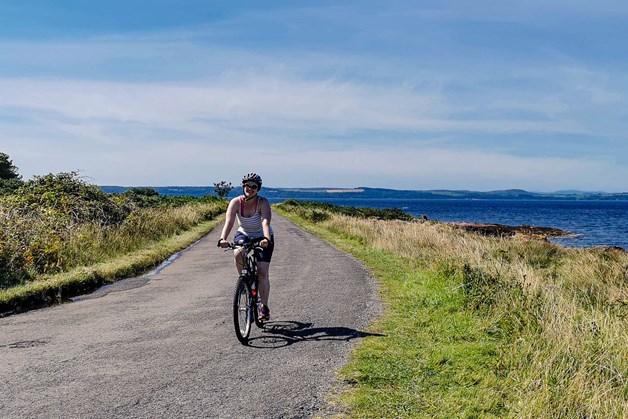
Cycling on Great Cumbrae, Image by Watch Me See
Your first option is to travel around Scotland on public transport. There is an extensive network of buses, trains and ferries and with a little bit of planning, you can go almost anywhere. Travelling by public transport will automatically slow you down as you are dependent on set timetables. But it also allows you to pay more attention to the landscapes you travel through. Instead of focussing on the road and traffic, you get to just look out the window and watch the scenery float by.
Alternatively, take it one step further and pick one of Scotland’s many trails to explore the country under your own steam. Whether you hike one of our fantastic long-distance trails, join the growing number of bikepackers or choose to follow the waterways in a kayak, canoe or stand-up paddle board - it will be one of the most unique ways to see Scotland.
One of my favourite trips was my solo hike on the Hebridean Way. In two weeks I walked across 10 of the Outer Hebrides, visited St Kilda and saw some of the most magnificent landscapes the Scottish islands have to offer.
If you are overwhelmed by the logistics, I’d be delighted to help you plan your self-powered hiking adventure!
Or if you’re not quite ready to go independently, find a suitable organised tour with one of the Wild Scotland members.
Familiarise yourself with the Scottish Outdoor Access Code
Thanks to the Land Reform (Scotland) Act 2003, we have the extreme privilege to have access to all Scottish land, whether it is publicly or privately owned. But this right comes with a great responsibility.
Before you make use of your “right to roam” - whether it is to hike, wild camp or enjoy the countryside another way - familiarise yourself with the Scottish Outdoor Access Code (SOAC).
The SOAC lays out a number of ground rules that show you how to enjoy the outdoors responsibly. From rules around camping wild, walking dogs and lighting fires to advice on “going” in the outdoors, how to behave around animals and more - the SOAC covers all aspects of responsible behaviour in the Scottish outdoors.
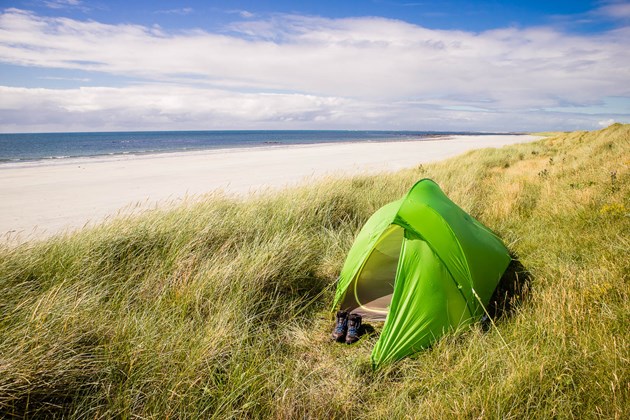
Wild Camping on South Uist, Image by Watch Me See
Respect local communities
Being a responsible traveller in Scotland is not all about the environment, nature and wildlife, but also about the people who call Scotland their home and their local communities. No matter how empty or “wild” a landscape might seem, always remember that this is somebody’s home.
The SOAC contains a lot of information on respecting the interest of others to make sure your behaviour does not negatively affect other people's experience of the great outdoors.
For example, avoid parking in dangerous or inconvenient locations, such as blocking access routes or parking in passing places on single track roads. This can have a massive impact on local communities who depend on road access. It is equally important to respect people’s homes and private property, for example when looking for a space to camp.
Picking up your litter and using public toilet facilities should be a given. As is supporting locally owned businesses which is a great way to meet locals and learn about life in the far-flung corners of Scotland.
Which brings me to - the fifth and final way to be a responsible tourist in Scotland I want to talk about...
Book activities with Wild Scotland members
All businesses and activity providers who want to be a member of Scotland agree to adhere to an outstanding code of ethics. They are committed to protecting and preserving the natural world of Scotland, look after its wildlife and work closely with local communities.
When you book with a Wild Scotland member business you can rest assured, not only will you have a great time, but your activity also won’t negatively affect the environment in any way!
While there are many more things you can do to travel Scotland responsibly, if you start with these 5 tips and get them right, you’re on a good track to be a responsible traveller.
